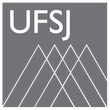Banca de QUALIFICAÇÃO: CAMILO LELLIS DOS SANTOS
Uma banca de QUALIFICAÇÃO de MESTRADO foi cadastrada pelo programa.STUDENT : CAMILO LELLIS DOS SANTOS
DATE: 25/02/2025
TIME: 09:00
LOCAL: Campos Santo Antônio
TITLE:
STUDY OF THE QUALITY OF PLASMA CUTTING IN CARBON STEEL BY VARYING THE NOZZLE HEIGHT, SPEED AND CURRENT
KEY WORDS:
Plasma cutting, CNC, Surface roughness, Microhardness, Cutting width, Coordinate system.
PAGES: 15
BIG AREA: Engenharias
AREA: Engenharia Mecânica
SUBÁREA: Processos de Fabricação
SPECIALTY: Processos de Fabricação, Seleção Econômica
SUMMARY:
The plasma cutting process is widely used to cut various types of metallic materials, which have as their main characteristic good thermal and electrical conduction, commonly in the form of sheets and with different thicknesses. Carbon steel, stainless steel, manganese steel, titanium alloys, copper, magnesium, aluminum and their alloys, and cast iron can be processed. The material used in this study was SAE 1020 carbon steel, which has wide industrial application through the plasma cutting process, due to the quality of the cut, simple and complex geometries, costs and production speed. This study aimed to evaluate the surface quality of the cut, the width of the cut and the microhardness in the regions thermally affected by the process. The experiments were carried out using a manual plasma source from ESAB, with a power of 45A, adapted to a CNC-controlled coordinate movement system, varying the height of the cutting nozzle, the speed of movement of the nozzle and the current of the plasma source. The statistical planning was done using the analysis of variance (ANOVA), in order to seek better results through the interactions of the parameters defined in the study. Lower roughness was verified for higher displacement speeds, increasing the width of the cut with increasing nozzle height. The result for microhardness was not significant for the parameters used.
BANKING MEMBERS:
Presidente - 2190171 - LINCOLN CARDOSO BRANDAO
Interno - 1860440 - CARLOS HENRIQUE LAURO
Externo à Instituição - SANDRO PEREIRA DA SILVA - UFLA




